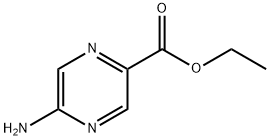When considering how long the effects of hyperbaric oxygen therapy last, it's crucial to explore related aspects. For example, does the duration of the effects vary depending on the patient's underlying health conditions? Are there differences in how long the effects persist for acute vs. chronic conditions treated with hyperbarics? Also, what's the relationship between the dosage of oxygen in hyperbaric therapy and the longevity of its effects? And how does the frequency of hyperbaric oxygen sessions impact how long the beneficial outcomes last?
How Long Do the Effects of Hyperbaric Oxygen Therapy Last and What's the Role of Oxygen in Hyperbarics?
Related Encyclopedia
Related Products More >
-
- 9002-10-2
- equest For Quotation
- Bottle,barrel,cargo,container,etc.
-
- 7782-44-7
- equest For Quotation
- 40L/Cylinder, ISO tank
-
- equest For Quotation
- 25kg/bag
-
- equest For Quotation
- 500g
-
- equest For Quotation
- 1kg
-
- equest For Quotation
- 25kg
-
- equest For Quotation
- 25kg




 沪ICP备2021018848号-5
沪ICP备2021018848号-5

On the other hand, if a patient has multiple chronic health problems, like someone with diabetes and heart disease, the situation gets more complicated. Diabetes can affect blood circulation, and that can interfere with how well the body absorbs and uses the extra oxygen from hyperbaric therapy. So, the effects might not be as long - lasting. They might need more frequent treatments to maintain any positive changes.
Now, when it comes to acute versus chronic conditions. For acute conditions, say a recent deep - tissue injury from an accident, the effects can be quite immediate. The high - pressure oxygen environment helps reduce inflammation quickly and promotes the growth of new blood vessels to the damaged area. The initial positive effects might be seen within a few days of starting the therapy. But the long - term duration really depends on how well the body can fully heal from that injury. If it's a serious injury, there could still be some residual effects that need ongoing management, and the hyperbaric oxygen therapy might just be a part of the overall treatment plan.
For chronic conditions like non - healing ulcers, the treatment is more of a long - haul. The effects might take longer to show up. It could be weeks or even months of regular hyperbaric oxygen sessions before significant improvements are noticed. And once the improvements do occur, they might require continued maintenance treatments to keep the ulcers from coming back. So, the lasting effects are more about preventing a relapse rather than a one - time fix.
The dosage of oxygen in hyperbaric therapy plays a big role too. A higher dosage might seem like it would lead to longer - lasting effects, but it's not always that simple. In some cases, the body can only absorb so much oxygen at a time. If the dosage is too high, it could potentially cause side effects like oxygen toxicity, which would actually counteract the benefits. For most patients, a carefully calibrated dosage is determined by the doctor. Usually, a moderate but effective dosage is used, and that helps ensure that the body can use the oxygen efficiently to promote healing. And when the body uses the oxygen well, the effects are more likely to be long - lasting.
Finally, the frequency of hyperbaric oxygen sessions is important. If the sessions are spaced too far apart, the body might not be able to build on the previous treatment's benefits. But if they're too frequent, it can be overwhelming for the body. For minor conditions, a few sessions spread out over a couple of weeks might be enough to get a good, long - lasting result. But for more serious or chronic issues, patients might need to go for sessions two or three times a week for an extended period. This regular exposure to the high - pressure oxygen environment helps the body continuously work on the healing process, which in turn increases the chances of long - lasting positive effects.
In conclusion, there's no one - size - fits - all answer to how long the effects of hyperbaric oxygen therapy last. It depends on so many factors like the patient's health, the type of condition being treated, the oxygen dosage, and the session frequency. But by understanding these factors, doctors can better tailor the treatment to each patient and increase the likelihood of achieving long - term beneficial outcomes.
First off, the patient's underlying health conditions play a big role. For patients with acute conditions like carbon monoxide poisoning or decompression sickness, HBOT can often produce rapid and relatively long - lasting effects. In these cases, once the immediate problem is resolved, the body may stay in a better state for a while. However, for patients with chronic conditions such as diabetic foot ulcers or radiation - induced tissue damage, the effects might not be as long - lasting. Chronic conditions usually involve more complex and long - standing tissue damage or physiological imbalances. So, even after HBOT, continuous management and follow - up may be needed to maintain the benefits.
The difference between acute and chronic conditions is significant when it comes to the persistence of HBOT effects. As I mentioned before, acute conditions tend to respond quickly, and the positive effects can sometimes be sustained for weeks or even months without further treatment. But for chronic conditions, the effects may wear off more quickly. This is because chronic conditions often have ongoing processes that continue to damage tissues or disrupt normal function, so the benefits of HBOT need to be reinforced.
The dosage of oxygen in hyperbaric therapy is also crucial. Higher oxygen dosages generally seem to have a more profound and potentially longer - lasting impact. A sufficient amount of oxygen can penetrate deeper into tissues, promote better healing, and reduce inflammation more effectively. But we also have to be careful not to overdo it, as excessive oxygen can have side effects.
Finally, the frequency of HBOT sessions matters a great deal. If a patient has regular and frequent sessions, the cumulative effect can be substantial, and the benefits are more likely to last longer. Sporadic sessions may not be as effective in maintaining the positive outcomes. In summary, multiple factors interact to determine how long the effects of hyperbaric oxygen therapy last, and personalized treatment plans are often necessary to optimize the results.
Now, let's think about acute versus chronic conditions. For something acute, like a sudden injury, the therapy might give a quick boost and the effects could wear off sooner because the body's healing process is usually faster. But for chronic issues, like long-term pain or inflammation, it might take more sessions, and the benefits might last longer because the therapy is helping to address deeper, ongoing problems.
Dosage is another big factor. If you get a higher concentration of oxygen, the effects might be more intense but also shorter-lived. On the other hand, a lower, more gradual dose might mean the benefits last longer because the body has time to adjust and heal more steadily.
And don't forget about how often you get the treatments. Going too often might overload the system, while spacing them out could let the body really benefit and hold onto those positive effects for longer. So, it's all about finding the right balance for each individual.
In the end, it's a bit of a puzzle, and what works for one person might not be the best for another. That's why it's so important to talk to your doctor and really understand what's going on with your body and how to make hyperbaric oxygen therapy work best for you.